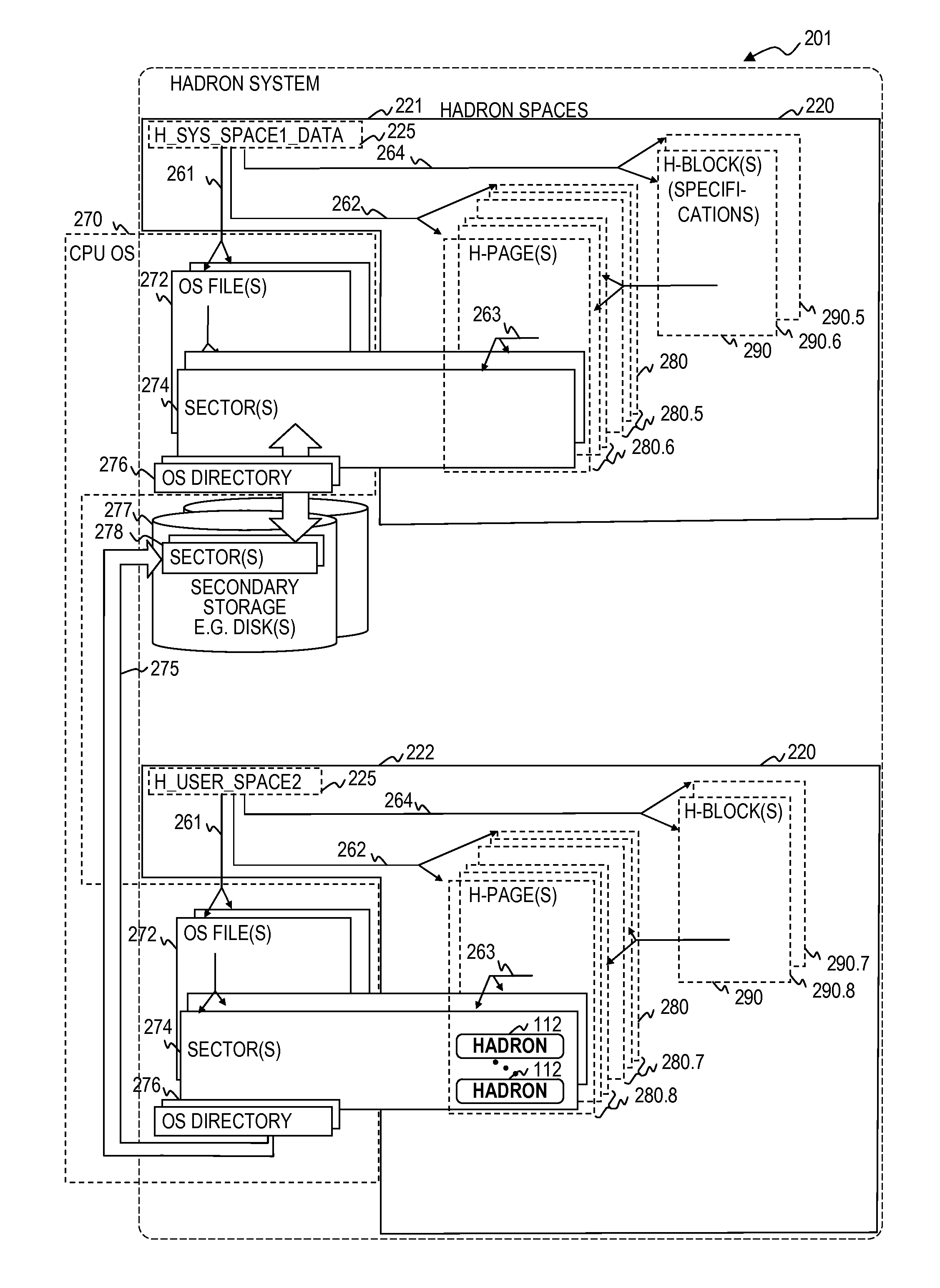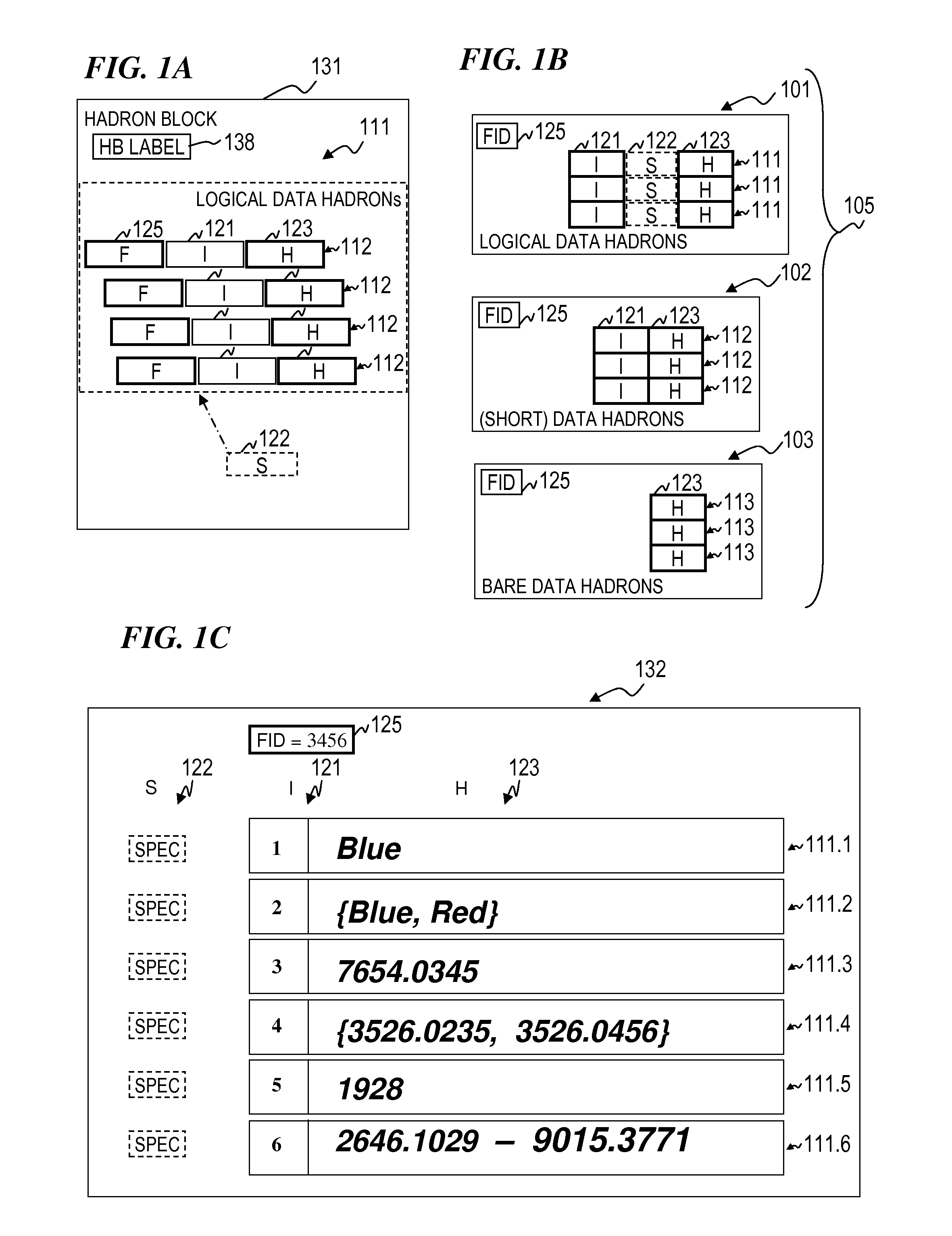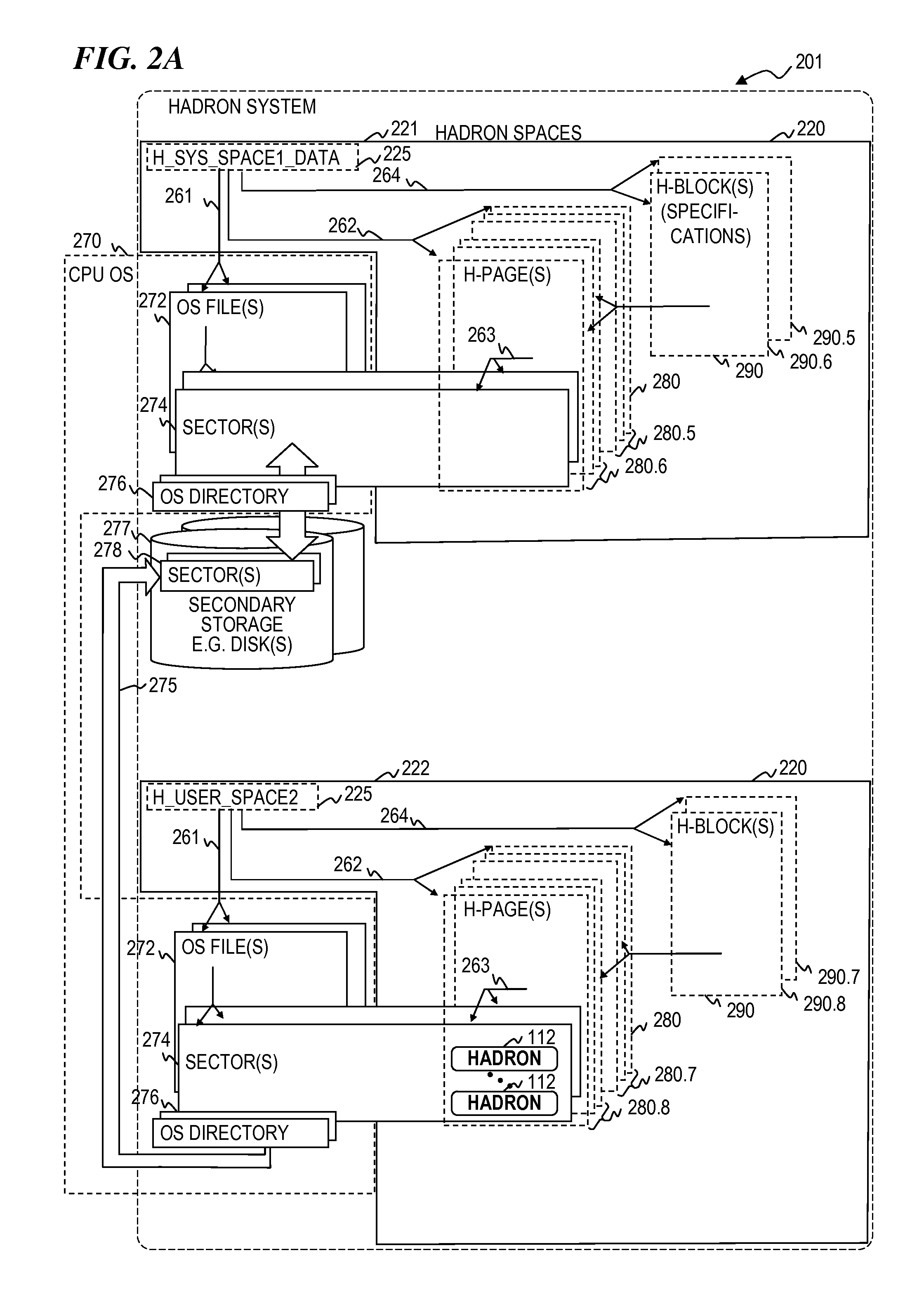Apparatus and method for organizing, storing and retrieving data using a universal variable-length data structure
- Summary
- Abstract
- Description
- Claims
- Application Information
AI Technical Summary
Benefits of technology
Problems solved by technology
Method used
Image
Examples
case # 1
[0172]Case #1—Empty Set
[0173]Assume the need to store one empty set { }. The empty set does not have any elements and also, in this case, does not have a name.
[0174]In some embodiments, every hadron 112 belongs to a hadron frame 101 with a specific FID 125, is associated with a specification component “S”122, and consists of two elements:
[0175]1. hadron Id component “I”121
[0176]2. holder component “H”123
[0177]Also, every hadron 112 must be unique within its universe. “Universe” here is used in the sense of “universe of discourse,” meaning a set that contains all the objects that enter into our discussion.
[0178]Every hadron 112 is to be created at a certain point of time. In some embodiments, within a universe, no two hadrons 112 may be created at (and marked at, or marked with) the same point in time.
[0179]For the case of storing one empty set { }, then:
TABLE 2.1(1) Syntax: Core Meta Syntax (CMX) Level 410CMX_CodeExpressionData TypeAllowed Values2DatasetStringName A6Dataset TypeStri...
case # 2
[0181]Case #2—Non-Empty set with one member. Consider the example:
[0182]Litres_in_gallon {3.785411784}
TABLE 3.1(1) Syntax: Core Meta Syntax (CMX) Level 410CMX_CodeExpressionData TypeAllowed Values2DatasetStringName A6Dataset TypeStringList, Tree, Table, Graph103Spec to DatasetD-Bond-HF104Spec Data TypeStringString, Number, Date,Boolean
TABLE 3.2(2) Meta: Meta Information Level (MIL) 411FIDISH1001678100litres_in_gallon1001679101List100268010210011002681103Number
[0183]In the above example, there are two hadron frames, one frame with FID=1001 with two hadrons each having the 1001 FID indicator, and another frame with FID=1002 with two hadrons each having the 1002 FID indicator. Hadrons of the frame FID=1001 (hadrons with Identifiers I=678 and I=678, or simply referred to as hadron I=678 and hadron I=679) are S-Bonded with 100 (Dataset Name) and 101 (Dataset Type) from the CMX level. Hadrons of the frame FID=1002 (hadrons I=680 and I=681) are S-Bonded with 102 (Spec to Dataset) and 103 (...
case # 3
[0188]Case #3—List. Consider the example:
[0189]Years_of_WWII {1939, 1940, 1941, 1942, 1943, 1944, 1945}
TABLE 4.1(1) Syntax: Core Meta Syntax (CMX) Level 410CMX_CodeExpressionData TypeAllowed Values2DatasetStringName A6Dataset TypeStringList, Tree, Table, Graph103Spec to DatasetD-Bond-HF104Spec Data TypeStringString, Number, Date,Boolean
TABLE 4.2(2) Meta: Meta Information Level (MIL) 411FIDISH1001678100Years_of_WWII1001679101List100268010210011002681103Number
TABLE 4.3(3) Data: Main Information Level (MNIL) 412FIDISH100369010021939100369110021940100369210041942100369310021942100369410021943100369510021944100369610021945
PUM
 Login to View More
Login to View More Abstract
Description
Claims
Application Information
 Login to View More
Login to View More - R&D
- Intellectual Property
- Life Sciences
- Materials
- Tech Scout
- Unparalleled Data Quality
- Higher Quality Content
- 60% Fewer Hallucinations
Browse by: Latest US Patents, China's latest patents, Technical Efficacy Thesaurus, Application Domain, Technology Topic, Popular Technical Reports.
© 2025 PatSnap. All rights reserved.Legal|Privacy policy|Modern Slavery Act Transparency Statement|Sitemap|About US| Contact US: help@patsnap.com



